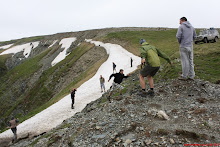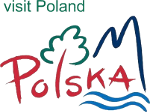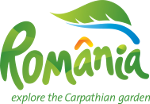THE TRIP
The route is around 18,000km (11,000 miles) in total. The tour organisers have driven it more than once and and tested every stage of the trail for safety and suitability.
The expedition begins in the UK then, after crossing the Channel we drive through Europe in convoy right to the Latvian-Russian border. This is where Europe as you know it endsand the real trip begins. It is true to say that from here we will be fighting time, terrain and fatigue to nurse the team and our vehicles to our destination: Mongolia.
The main aim at this point it to get to Irkutsk in Russia via Novosibirsk. The route for this alone is around 10,000km (6,200 miles) and will take 10 days from the time we leave the UK
We then drive into the beautiful Altai along the river Katun where life itself seems to change as we approach Mongolia and run out of tarmac roads. From here 90% of the route is on tracks or off-road. Our journey passes through Mongolia along her northern border. We’ll see Mongolian Altai, salt lakes, the Khorgo volcano hidden in the mountains Tovhon convents and on to Amaybayasgalant Kharakorin and Shanhe monasteries of Ulan Batar and, perhaps most important of all, we’ll visit the beautiful desert of Gobi.
Once in Mongolia our trip will be experienced from the vantage point of many hours in your car seat. Each day we will start around 8am (local time) and finish around 6pm in the afternoon. We will make regular stops and they will be longer to allow you to stretch, get refreshments and take in the sights but we will not have one day off from driving. This stage is about 3000km in total and will take about 18 days.
The third stage is heading back home. We initially head for Krasnoyarsk stopping at Lake Baikal along the way then back into Europe. From here it takes around 6-8 days driving to get back to the UK
The entire trip is given to everyone as GPS data to enter into your own GPS unit. We also offer navi maps and maps for Ozi Explorer.
DRIVER:
Because each day we spend a certain amount of miles on the road – or ‘off it’ even – it is advisable not to have just one driver. Although not compulsory, we strongly recommend that at least two people in the car possess a full driving license.
ROADSIDE ASSISTANCE
For legal reasons the organiser is not able to provide full assistance. The organiser however undertakes to provide, if possible, medical (first aid) and mechanical assistance until the arrival of the appropriate emergency services.
It is therefore recommended that participants have in place full personal health insurance and roadside assistance for their vehicle and passengers (medical insurance cover, European breakdown cover).
You will need travel insurance. There is no real need for any any mandatory vaccinations. We will have to apply for visas to travel to Russia (twice) and Mongolia (single or double) which can take about 3-4 weeks to organise.
FIRST AID:
This is not essential, but it is recommended that at least one person in your group are trained to provide basic medical first aid. As organisers we will provide assistance to the best of our abilities.
CAR – PREPARATION:
Preparation is the most important aspect of the trip. After vehicle preparations you need to carefully consider your camping equipment. We will obviously spend most nights in the natural environment. In the high mountains it can be raining and quite cold. In the desert it is sometimes difficult to find a spot to set up camp because there are stones everywhere. And no matter where you are there will be many crawling insects and the wind blows quite gustily in some locations.
You must have a Green Card for Russia. The recommended type of tyres are MT. Once we get into Mongolia our route os only on Tarmac for about 3% of the trip. Depending on the weather, we could have mud and plenty of rivers to cross. It is not a green-lane tour, the off roading can be arduous and tiring. Stock up on recovery ropes, shackles, a ground anchor and high-lift jack that can all cope with the laden weight of your car. And store it in the vehicle where it is easily accessible.
A winch would be a good addition to the vehicle . With all of the additional and recommended equipment listed nothing is a requirement to travel but you should be prepared to both recover your own vehicle and recover other people.
Check the vehicle before you leave for possible defects. Each car must be 100% technically efficient. As with all of our tours if your car breaks down we will all help to fix it wherever possible. If we can not fix it on the trail we will tow it to the nearest garage or workshop. (you will bear the costs of repair to your own vehicle in such circumstances).
You can read a recommended spare parts list that you can assemble for this trip here: www.transmongolia.4x4zone.co.uk.
Cruising speed for the convoy does not normally exceed 100km/h (60mph) on tarmac. The fuel in Mongolia is of average quality. (bring extra fuel filters) The best currency in the East is USD or EURO cash. Credit and Debit cards are not universally accepted in some places and not at all in others.
In Mongolia we will drive several routes of 600-800km between fuel stations. It is safest if your vehicle can carry enough fuel for at least 1200km so auxiliary fuel tanks are recommended. You can also use Jerry Cans if they are in good condition and stored safely and securely
We recommend carrying two spare tyres with equipment to repair punctures and an air compressor to inflate them. You should also carry spare tubes even if your tyres are tubeless.
We realise that everyone will want to prepare their car in their own way, so here are a few basic tips/reminders:-
- Check all fluids in your car – radiator, engine oil, gearbox oil, axle levels, washer fluid.
- Check all leaks and spills that you have.
- If you have winch, check its operation.
- Check towing points, they must be securely attached to the chassis.
- Check all lights, carry spare bulbs and fuses.
- Check the condition of your battery. Often overlooked, it is the heart of your engine.
- Remember to take some spare parts. Anyone already familiar with your car will know what has been repaired recently and what can potentially go wrong. Basic items include wheel bearings, CV joints, belts (alternator/air conditioning/etc.). Although not essential, if you can afford to take a spare water pump and alternator with you, then even better. If they are not used on the tour, inevitably they will be used one day! The rest is in the lap of the Gods.
EQUIPMENT :
Equipment which every participant is required to have:
An off-road vehicle (obviously!) in good condition and well equippped to cater for and accommodate yourselves and your passengers for the duration of the tour. It should be fitted with MT tyres at least 31 inches in diameter. Each vehicle must be fitted with a CB radio for communication and a GPS unit capable of storing a minimum of 500 waypoints.
Additional equipment that we recommend include:
Underbody protection for steering, transmission and diffs or axles. Exterior protection for all lights and front grille.
Strong front bumper with recovery points and winch.
Upgraded suspension
Spare parts and tools
Axe, shovel, gloves, recovery rope, shackles, tree strop.
Camping equipment: We will spend 6-7 weeks in the open without access to hotels or even campsites in many areas. You need to be prepared for the varying terrain and weather. Siberia in the summer can be rainy and very hot at times which brings the lovely addition of flying and biting insects. Mongolia at the end of June can be cold even at night and very windy. Overnight stops will not be in exposed locations but you need to be good at coping with nature to stay comfortable.
We are assuming that most of you are seasoned travelers, but our suggestions are directed mainly to novices. You have to choose how you prefer to spend the night, either a ground tent, inside the vehicle or a roof tent. At the very least you’ll need agood sleeping bag, cooking equipment, mosquito net, chairs, tarp and some idea of how you’re going to organise your daily menu.
 A good quality sleeping bag is a must. Regardless of whether I sleep in a tent, a roof tent or in the car (unless I have a Webasto heating), it is worth buying a sleeping bag that will maintain 5-15 degrees. The worst thing ever is a cold night’s sleep, so again be aware that in the high mountains of Altai, the temperatures can drop to around -5 degrees at night. Unfortunately in the Siberia , although it can be hot and beautiful during the day, temperatures can plummet at night. A secondary blanket or similar is a good idea, this is your choice entirely; stay warm!
A good quality sleeping bag is a must. Regardless of whether I sleep in a tent, a roof tent or in the car (unless I have a Webasto heating), it is worth buying a sleeping bag that will maintain 5-15 degrees. The worst thing ever is a cold night’s sleep, so again be aware that in the high mountains of Altai, the temperatures can drop to around -5 degrees at night. Unfortunately in the Siberia , although it can be hot and beautiful during the day, temperatures can plummet at night. A secondary blanket or similar is a good idea, this is your choice entirely; stay warm!
This information is aimed towards the novice but perhaps might be useful to you too if you are unfamiliar with that area of the world. You need to be prepared for the heat reaching 35°C and local, morning frost. You must have equipment to protect yourself from the onslaught of mosquitoes and horseflies. You will need clothing that can withstand rain and high winds at times. Of course these are extreme examples and it might not happen happen but it’s better to be prepared.
Cookers, heaters etc. A basic gas stove that takes cylinders can be bought in Asda or Tesco’s for around the £10 mark. Heaters are also available should you think they are necessary, although these are often taken but rarely used.
Water can be scarce in some areas so you should be able to carry enough for 2 or 3 days at least.
We recommend sleeping in the car or in a rooftent. If you prefer to sleep in a ground tent then also bring a good quality sleeping mat or inflatable mattress. Temperatures can drop to 0°C at night and rise to 35°C at noon.
A major consideration is insects crawling on the ground. They all come out at night so you need to protect against them because some of the bite. In the morning be sure to shake out your boots before putting them on. A lot of time will be spent wild camping so think of chairs, tables, canopy, etc for comfort in the evenings. Feeding yourself, of course, almost every day you will have access to shops and vegetable markets. You can also eat in restaurants which are cheap but not available everywhere.
Remember that if you are uncomfortable in the vehicle or whilst trying to sleep it could ruin your memory of this fantastic overland trip.
Other preparations largely concern maps and literature. We will try to keep you informed and educated on the history and culture of the regions as we go, but it is also good to have some of your own material and guide books which you can read in advance and on the way.
If you have any questions about the equipment, luggage or clothes that you would like to take with you, then simply contact us or visit our 4x4zone Team stand at the fairs and shows. We will provide as much help as possible.









